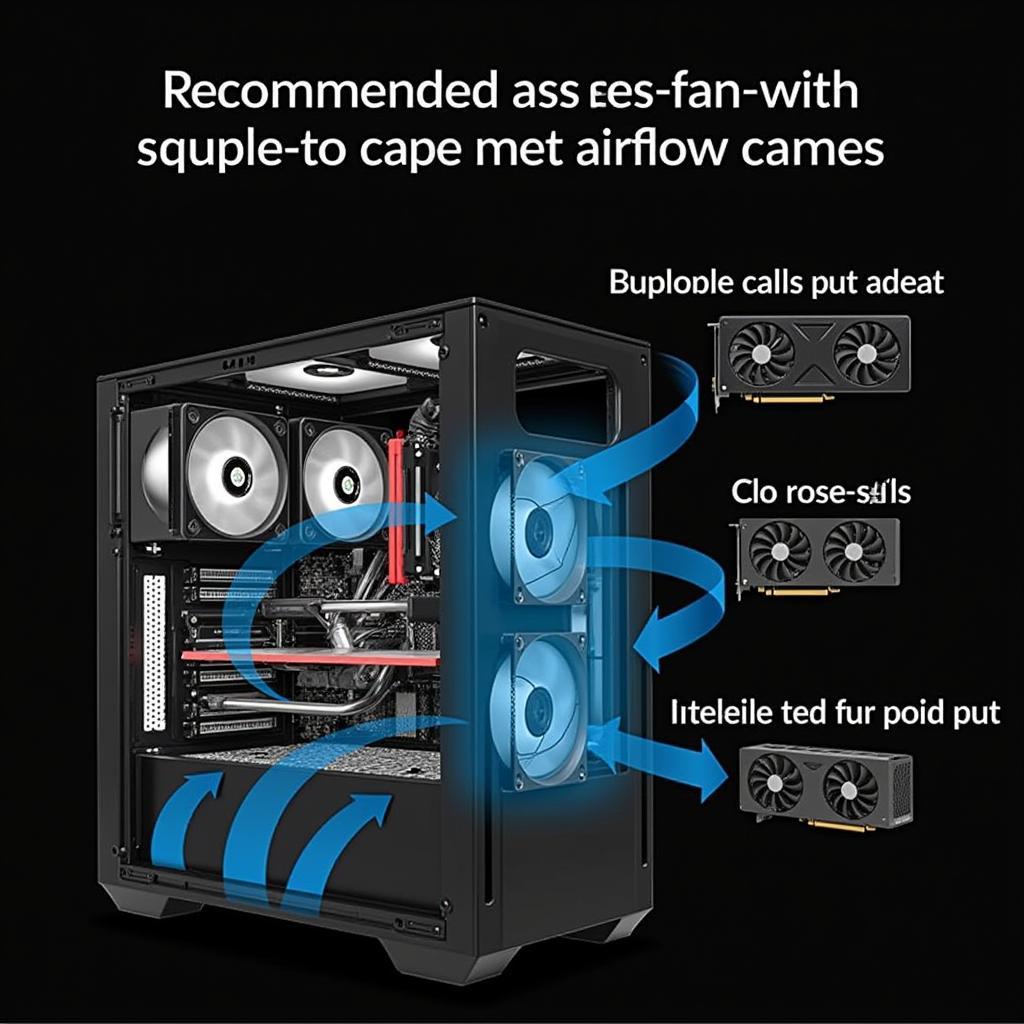Case fan placement can significantly impact your computer’s cooling efficiency. Proper airflow is crucial for maintaining optimal temperatures, preventing overheating, and ensuring the longevity of your components. This guide delves into the intricacies of case fan placement, providing you with the knowledge to optimize your PC’s cooling solution.
The Importance of Airflow
Before we discuss specific fan placements, it’s vital to understand the fundamental principle of airflow within a PC case. Heat naturally rises, and by strategically positioning fans, you can create a pressure difference that efficiently draws cool air in and expels hot air out. This continuous cycle of air exchange is what keeps your components cool under load.
Intake vs. Exhaust: Finding the Right Balance
Case fans can be installed as either intake or exhaust fans, and finding the right balance is essential for effective cooling.
- Intake fans are positioned to draw cool air into the case. They’re typically placed at the front, bottom, or side panels.
- Exhaust fans expel hot air from the case. They’re often situated on the rear, top, or side panels.
A general rule of thumb is to have slightly more intake than exhaust fans. This creates a positive pressure environment inside the case, which helps prevent dust buildup.
Common Case Fan Configurations
Different PC cases offer various fan mounting options. Let’s explore some of the most common configurations:
1. Front Intake, Rear Exhaust
This is the most basic and effective setup, suitable for most users. A single front intake fan draws cool air in, while a rear exhaust fan expels hot air, creating a direct airflow path.
2. Front and Top Exhaust, Rear Intake
In this configuration, front and top fans act as exhausts, pulling cool air from the rear intake fan. This setup can be effective for cases with a PSU shroud, as it helps to isolate the PSU’s heat.
3. Multiple Intake, Multiple Exhaust
For high-performance systems generating significant heat, employing multiple intake and exhaust fans can enhance cooling performance. This setup often involves front and bottom intakes with top and rear exhausts, creating a more robust airflow pattern.
 Case Fan Placement for Multiple GPUs
Case Fan Placement for Multiple GPUs
Factors Influencing Fan Placement
Several factors can impact the ideal fan placement for your specific setup:
- Case Size: Larger cases generally offer more fan mounting options and better airflow potential.
- Component Heat Output: High-performance CPUs and GPUs generate more heat, requiring more aggressive cooling solutions.
- Cable Management: Proper cable management is essential for unobstructed airflow.
Tips for Optimal Case Fan Placement
- Position intake fans near cooler areas: Placing intake fans close to the front or bottom of the case, where cooler ambient air resides, ensures efficient cool air intake.
- Avoid placing exhaust fans directly above intake fans: This can create a short-circuiting effect, where hot air is immediately drawn back into the case.
- Consider the direction of your CPU cooler: If your CPU cooler is a tower cooler, align its exhaust with a rear or top exhaust fan for optimal heat dissipation.
- Experiment with fan speeds and monitoring: Use fan control software to adjust fan speeds based on system load and temperature readings.
Frequently Asked Questions
Q: How many case fans do I need?
A: The ideal number of case fans depends on your system’s heat output and case size. A good starting point is two fans – one intake and one exhaust.
Q: Can I have too many case fans?
A: While more fans generally mean better cooling, there is a point of diminishing returns. Too many fans can create excessive noise and turbulence.
Q: Does fan direction matter?
A: Yes, fan direction is crucial for proper airflow. Ensure your fans are oriented correctly for intake or exhaust.
Conclusion
Effective case fan placement is a fundamental aspect of building a well-cooled PC. By understanding the principles of airflow and implementing the strategies outlined in this guide, you can optimize your system’s cooling solution, ensuring stable temperatures and prolonged component lifespan. Remember to consider your specific components and case when deciding on the best fan placement.
For more insights into PC hardware and troubleshooting, explore our other articles on Cooler Master CPU fan control software and case fan NguyenCong. If you have any questions or require personalized assistance, our team at FansBongDa is here to help. Contact us at 0903426737, email us at fansbongda@gmail.com, or visit us at Tổ 9, Khu 6, Phường Giếng Đáy, Thành Phố Hạ Long, Giếng Đáy, Hạ Long, Quảng Ninh, Việt Nam. We offer 24/7 customer support.


